12 Edible Climbing Plants For Fences With Kitchen Gardener Stephanie Hafferty


Elizabeth is a Permaculture Garden Designer, Sustainability Consultant and Professional Writer, working as an advocate for positive change. She graduated from the University of St. Andrews with an MA in English and Philosophy and obtained a Diploma in Applied Permaculture Design from the Permaculture Association.
Reviewed By PETER LICKORISH

Peter is a Horticulture Lecturer and self-employed Horticulturist, with a passion for diverse areas of the industry - from garden design to the science behind plant growth and propagation. He has completed the Royal Horticultural Society’s Master of Horticulture (MHort) Award and lectures on RHS courses at Bedford College.
Contributions From STEPHANIE HAFFERTY

Stephanie Hafferty is a No-Dig Kitchen Gardener who has published several award-winning books on organic growing and appeared on several UK TV shows. In 2021 she produced a demonstration garden for the RHS at Hampton Court with Charles Dowding. Stephanie is Co-Vice Chair of the Garden Media Guild and a member of the Guild of Food Writers.
Whenever we are choosing plants for our gardens, it is important to choose the right plants for the right places.
We need to think about which plants will thrive in our particular gardens, in the environmental conditions that we and nature provide in a particular spot.
When choosing climbing plants for fences, the decision-making process should be no different.
There are also other things, of course, that we should bear in mind when choosing climbing plants for any situation.
For one thing, we need to consider whether or not the fence in question is tall and sturdy enough to support the growth of the climbers or vines we are considering.

Secondly, we should think about what else a particular climber for a fence might be able to provide to us.
We should think about what we want the plant to achieve in the garden and also, potentially, what yields it might provide.
Personally, when I pick climbing plants to grace a fence, I often think first about edible options – because when we choose a climbing plant that can provide edible yields, we can have a productive garden as well as a beautiful one.
“I love to grow edibles and grow a huge range of different edible plants from salad leaves to fruit trees,” shares Stephanie Hafferty, an Organic Gardener and Author.
“My favourite is always whatever is the new taste that week, such as the first peas in spring or the first taste of a fresh raspberry pulled from the garden.”
To help you create your own edible garden paradise, here are some edible climbing plants to consider.
You can also paint the fence in between your plantings!
Annual Climbers
First of all, if you have a fence and are looking for climbing plants that will be welcome additions to your garden during the summer months, looking at annual climbers may be a good idea.

These will all thrive in a sunny spot, so a south-facing fence could be ideal for their growth.
They will not last more than a single season in your garden but can add a lot and provide you with a prodigious quantity of food.
Choosing annuals for summer growing against a sunny fence can be a good idea if the fence is not particularly sturdy or would not be suitable for more vigorous and bigger perennial plants, which cover it constantly year in and year out.
1) Squashes, Pumpkins & Cucumbers

- BOTANICAL NAME: Cucurbita spp.
- HARDINESS RATING: H2
- FLOWERS: yellow
- FLOWERING SEASON(S): summer
First of all you might consider the numerous squash, pumpkin and cucumber options within the Cucurbitaceae plant family.
There are many edible options that you might grow on supports against a fence and this can be one great way to make the most of every inch of space in your garden for sustainable food production.
With certain fences, the fence itself might be the support structure for these annual climbers.
In other cases, you might affix support wires or trellis structures to the fence to support the plants.
In either case, these plants can look good and be productive when cared for correctly in your garden, but do bear in mind that fruit can be very heavy.
2) Climbing Beans
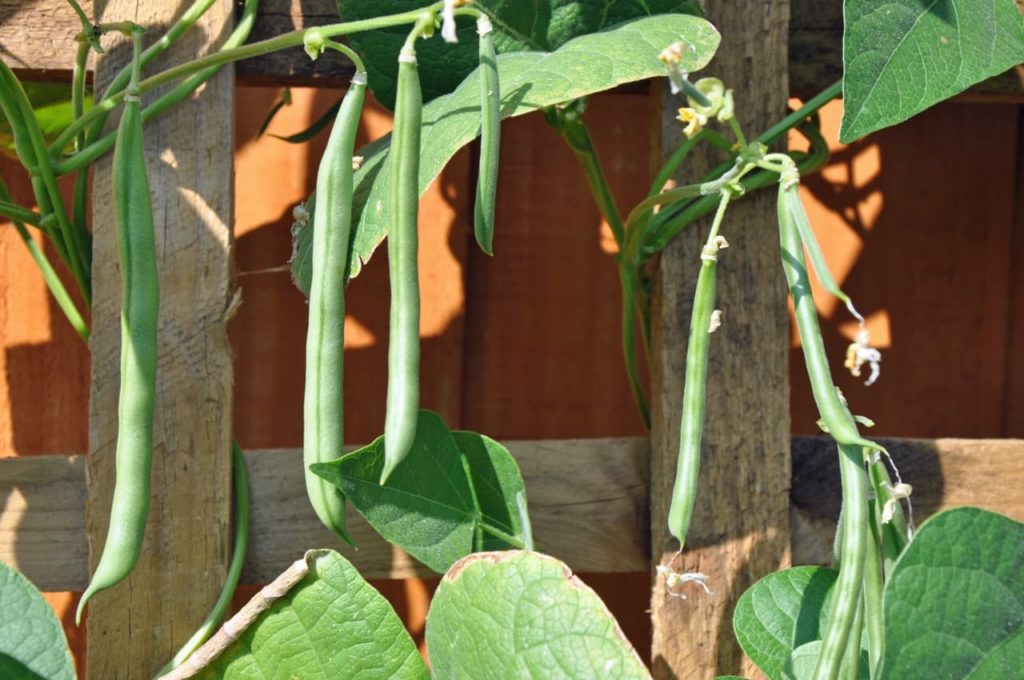
- BOTANICAL NAME: Phaseolus ssp.
- HARDINESS RATING: H2
- FLOWERS: purple, white, red, yellow and pink
- FLOWERING SEASON(S): summer
Another option that could be great for a sunny fence is climbing beans.
There is a wide range of different climbing beans in the Phaseolus genus that you might consider, including many cultivars of Phaseolus vulgaris.
You might also consider growing runner beans (P. coccineus), which is another great and very productive option for UK gardens that can also be extremely attractive, producing scarlet flowers over the summer months.
3) Garden Peas
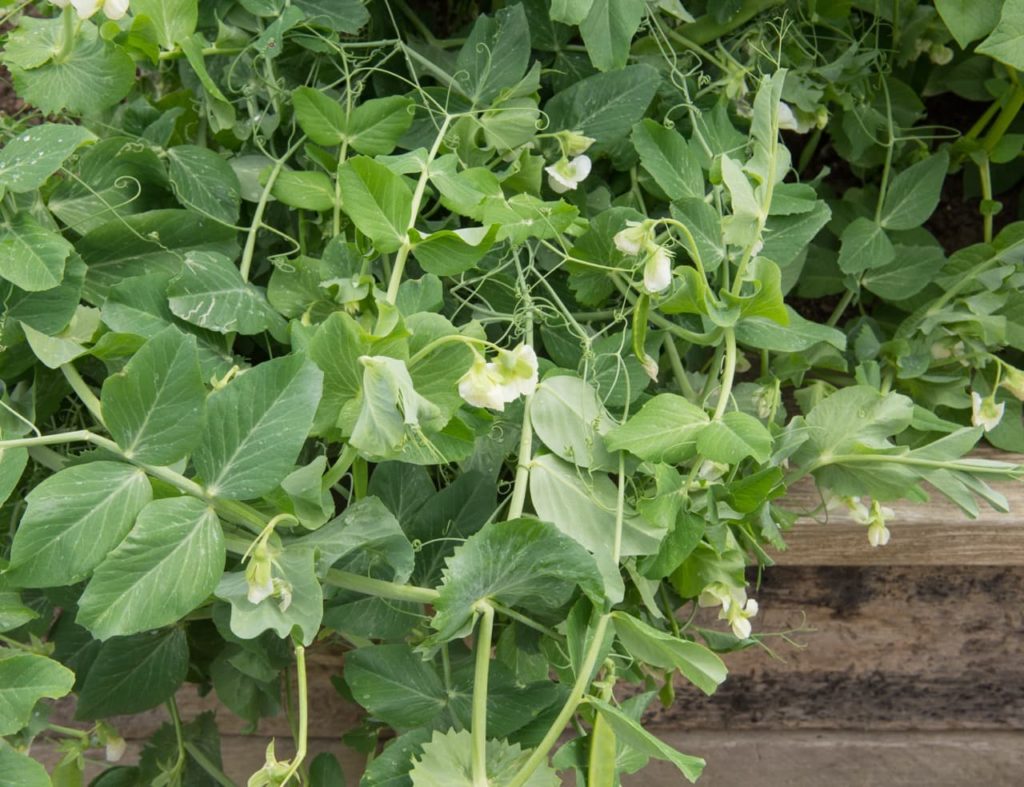
- BOTANICAL NAME: Pisum sativum
- HARDINESS RATING: H2
- FLOWERS: white, pink or purple
- FLOWERING SEASON(S): summer
Another annual climbing plant you might consider placing up against a sunny fence is the common garden pea.
Peas can be grown up a fence or a trellis structure and will grasp on with tendrils to support themselves.
If you have never grown your own peas before, then you will be amazed by just how sweet they can be when you pick them straight from your garden.
4) Hyacinth Beans
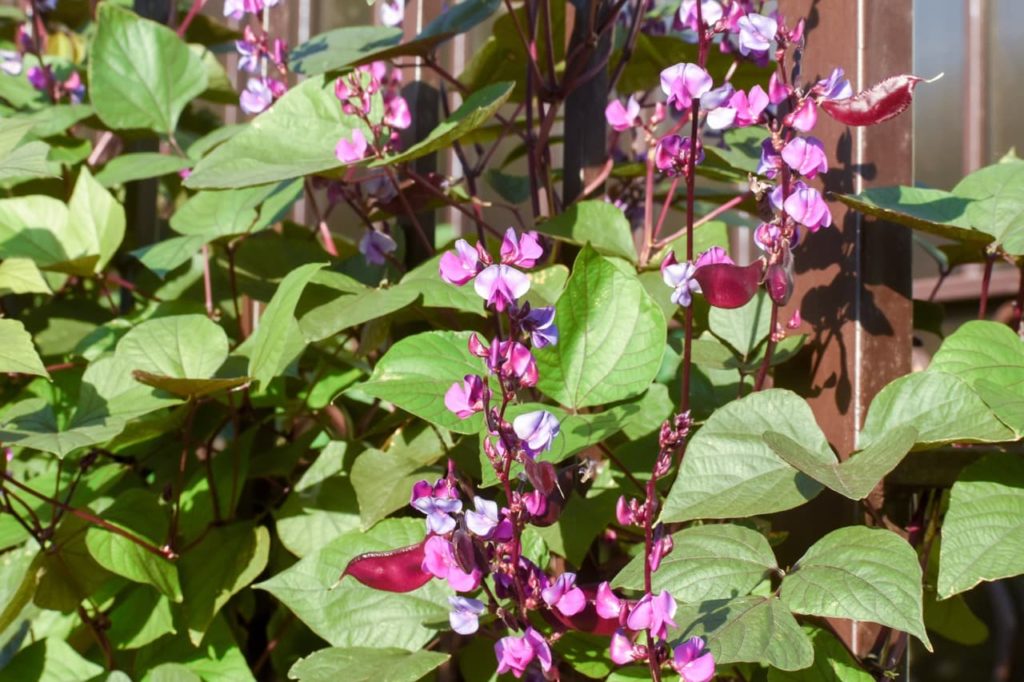
- BOTANICAL NAME: Lablab purpureus
- HARDINESS RATING: H1C
- FLOWERS: purple and white
- FLOWERING SEASON(S): summer / autumn
Another edible climber which is ornamental and productive is the hyacinth bean.
This is a perennial climber, but it is tender and is therefore commonly grown as a summer annual in cooler climates like here in the British Isles.
It produces pea-like flowers amid dark green leaves which are followed by edible green pods that are often flushed with a purplish hue.
Fast-growing and twining, it will grow well in full sun on a sheltered south or west-facing fence, in moist but well-drained soil.
5) Nasturtiums
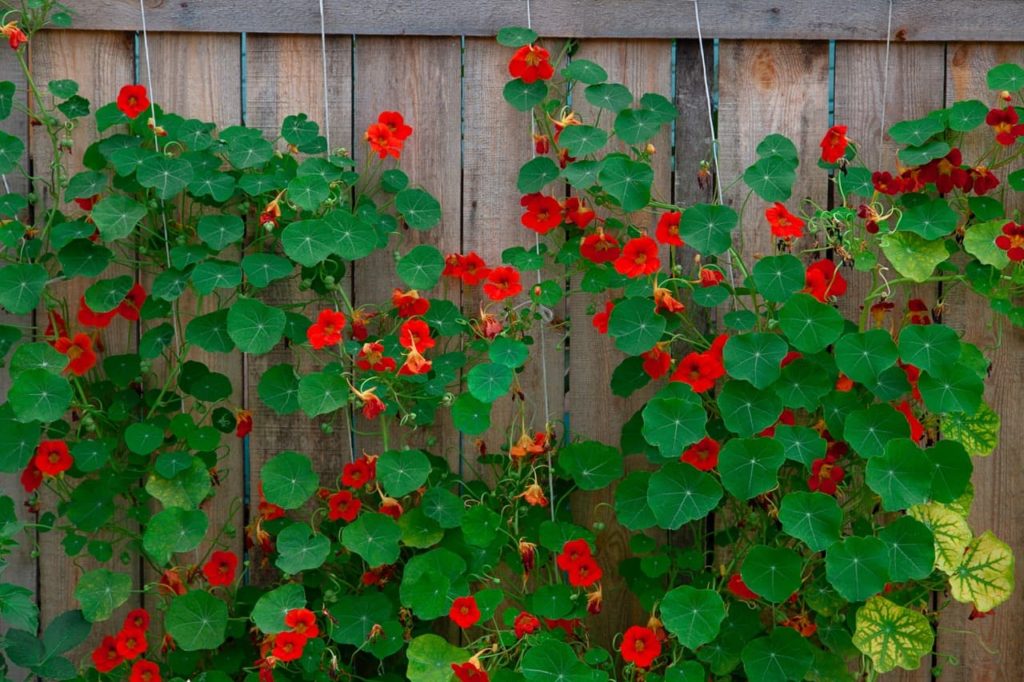
- BOTANICAL NAME: Tropaeolum spp.
- HARDINESS RATING: H2-H5
- FLOWERS: orange, red and yellow
- FLOWERING SEASON(S): summer / autumn
Another annual climber with great edible potential is the nasturtium.
The plant has edible leaves and flowers which are great in salads.
The flower buds can also be used like capers.
Choose a nasturtium and you can enjoy blooms to pick within the garden space for a long period over the growing season.
There are several different nasturtiums that will climb happily against a fence.
Perennial Climbers
Of course, if you do not wish to sow climbers anew each year to cover your fence or if the site is a little too shaded for annual production, then there are plenty of perennial climbers that you might consider.
Make sure that your fence is well-constructed and sturdy enough for the plants in question when choosing a perennial.

Perennial plants will come back each year and are a sustainable choice.
In the right spot, these plants can also potentially provide you with a lot of food, as well as cover a fence in your garden.
Here are some edible perennial climbers for fences that you might consider.
6) Hardy Kiwi ‘Issai’
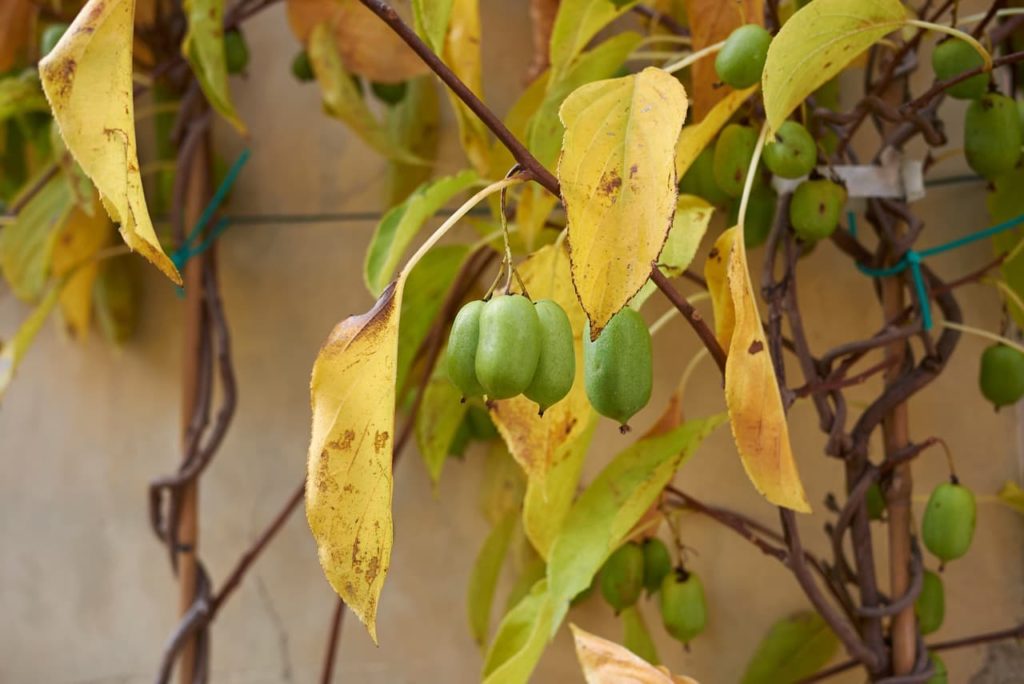
- BOTANICAL NAME: Actinidia arguta ‘Issai’
- HARDINESS RATING: H5
- FLOWERS: white
- FLOWERING SEASON(S): summer
The hardy kiwi is an attractive deciduous climber which can work well in a sheltered and sunny position, providing fruits and visual appeal when grown against a fence.
A compact and self-fertile option (meaning that you do not need to grow both male and female plants), ‘Issai’ is a great choice for UK gardens.
This plant grows best in fertile and moist but well-drained soil, which is neutral to acidic, in full sun and with shelter from the winds.
7) Potato Beans
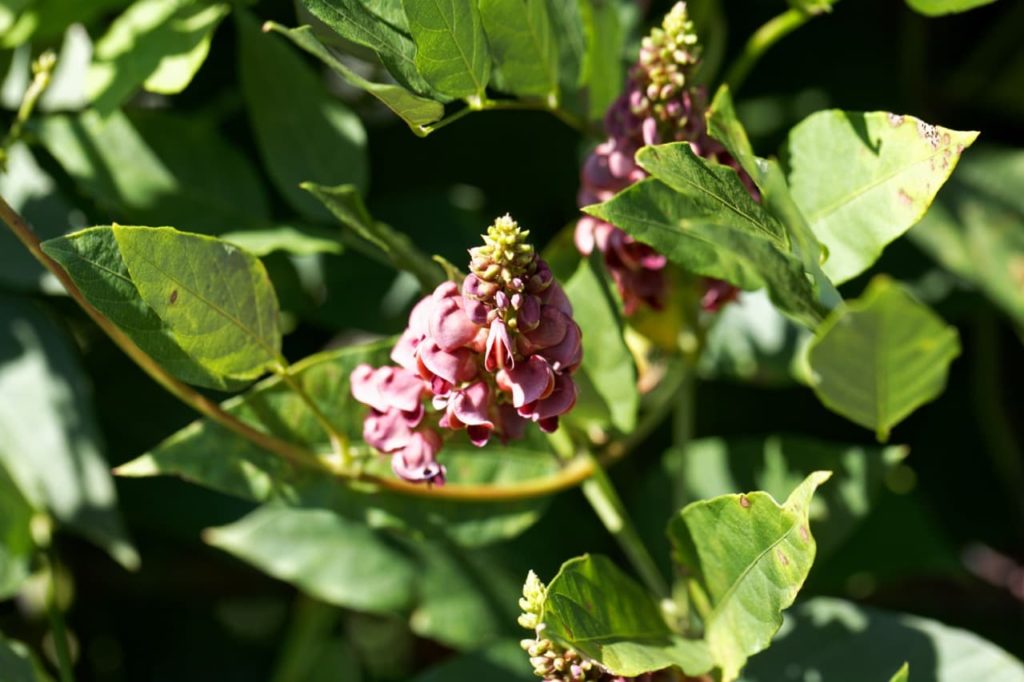
- BOTANICAL NAME: Apios americana
- HARDINESS RATING: H6
- FLOWERS: red and brown
- FLOWERING SEASON(S): summer / autumn
This is another interesting perennial edible climber to consider.
It is the tubers of the plant that are edible, forming below the slender vines with scented flowers borne in the late summer and autumn.
The flowers are pea-like in form and reddish-brown in colour.
Grow these climbers, which can reach over 2.5m in height, in moist but well-drained soil in full sun or partial shade.
They are H6 hardy and should come back each year over a number of seasons.
“Do not confuse this plant with the potato vine, Solanum laxum or Solanum jasminoides, which are poisonous,” says Master Horticulturist Peter Lickorish.
8) Hops
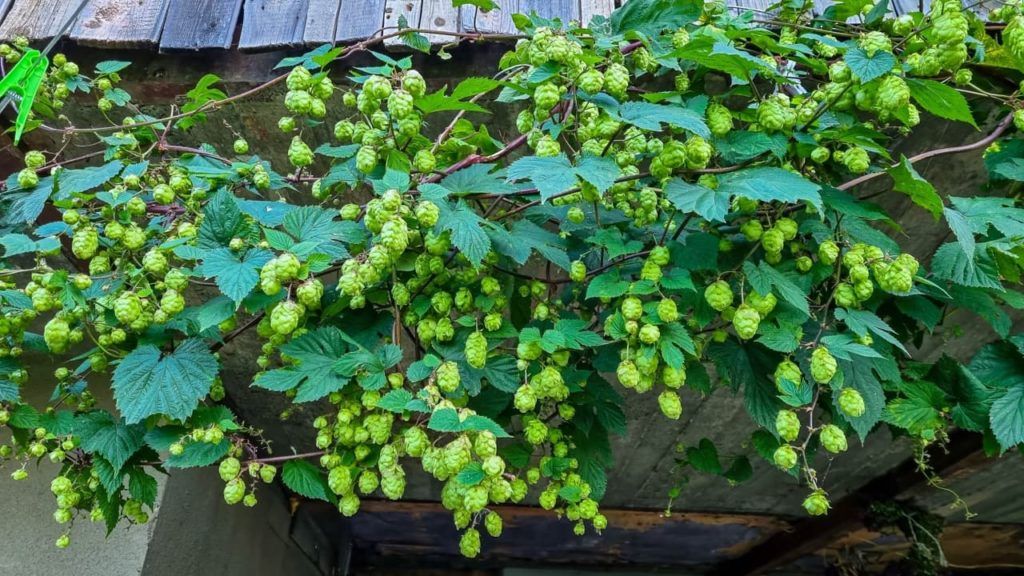
- BOTANICAL NAME: Humulus lupulus
- HARDINESS RATING: H6
- FLOWERS: green and yellow
- FLOWERING SEASON(S): summer
This is another interesting herbaceous climbing plant to consider for a fence.
It will die back to the ground each winter but grow tall again the following year.
This vigorous climber can grow very tall in the right location and is traditionally used in making beer.
Grow hops in moist but well-drained soil in full sun or partial shade on a fence with a south or west-facing aspect.
The location should be sheltered and care should be taken that the soil does not dry out too much, especially in a sunnier spot.
9) Blue Passion Flower

- BOTANICAL NAME: Passiflora caerulea
- HARDINESS RATING: H4
- FLOWERS: blue, white and purple
- FLOWERING SEASON(S): summer / autumn
Blue passionflowers can, in the right location (which is mild and sheltered enough), be an evergreen, retaining their leaves year-round.
However, it will require a very mild location here and will lose its leaves in many parts of the country if not moved undercover in winter.
The flowers are dramatic and look wonderful against a sunny fence in many gardens, and there is also the added bonus of edible fruits if all goes well.
10) Fruiting Currants
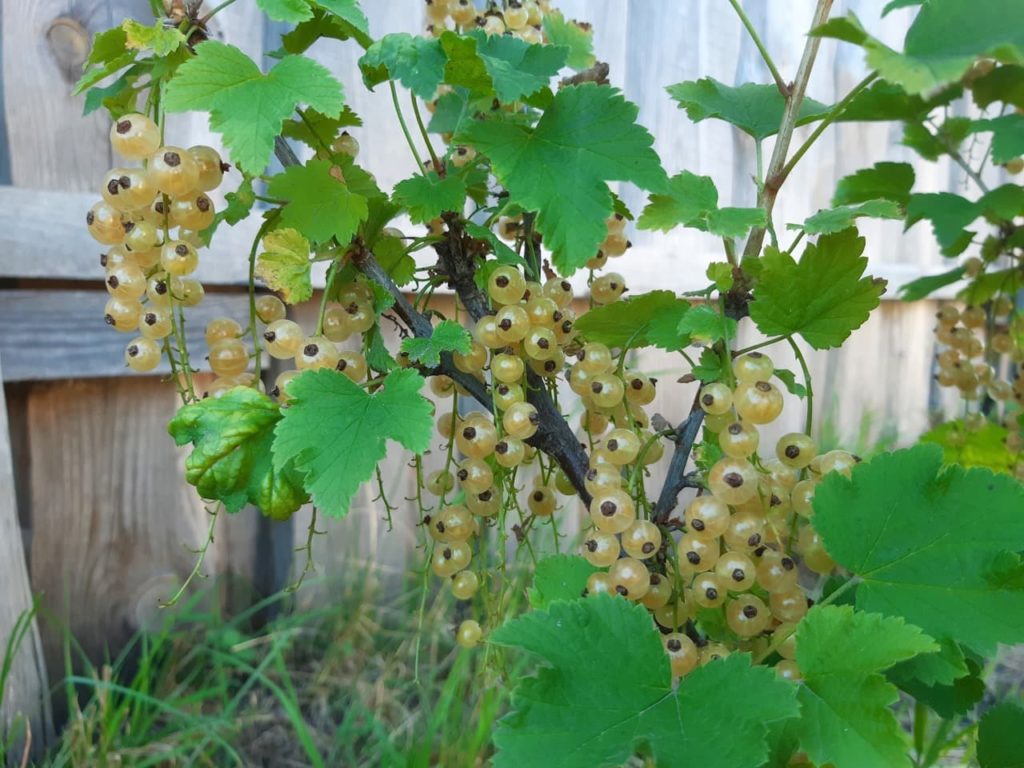
- BOTANICAL NAME: Ribes spp.
- HARDINESS RATING: H5-H6
- FLOWERS: yellow, green, pink and red
- FLOWERING SEASON(S): spring
Another option that you might not have considered is that, rather than growing an edible climber on a fence, you might be able to train fruit bushes up and against it.
If you are looking for fruit bushes then some of your best options are in the Ribes family.
You might grow red or white currants, blackcurrants or gooseberries.
“I would recommend the Jostaberry, which has impressively sized fruit, with the best qualities of both blackcurrants and gooseberries,” shares Peter.
These can all be great options for covering a fence, as well as great options for a food-producing garden.
11) Berries
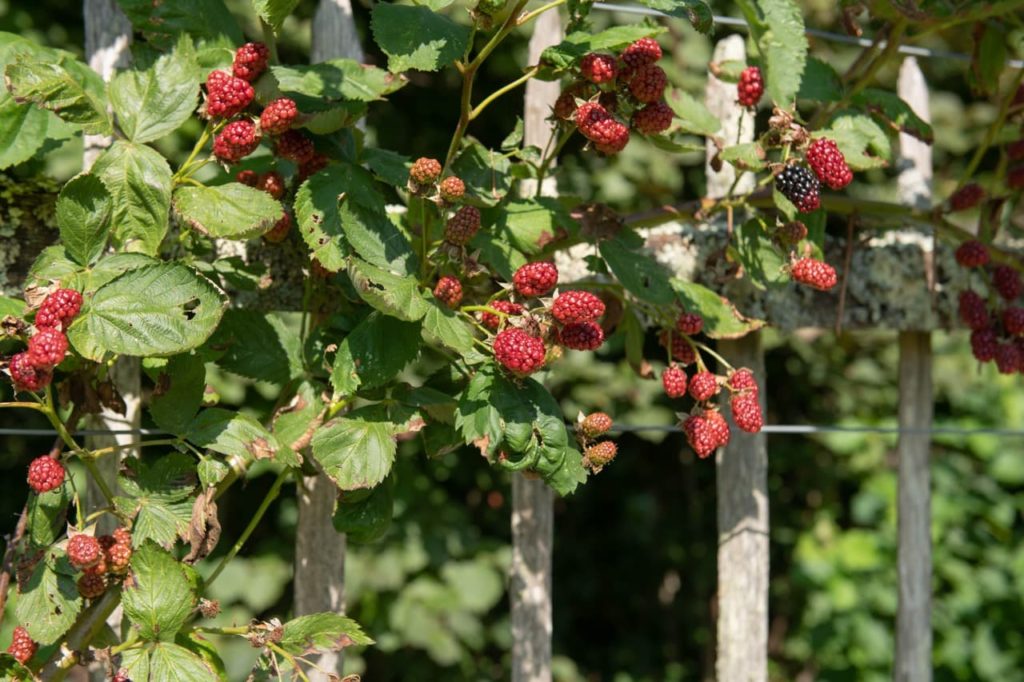
- BOTANICAL NAME: Rubus spp.
- HARDINESS RATING: H5-H6
- FLOWERS: yellow, white and pink
- FLOWERING SEASON(S): spring / summer
Other marvellous soft fruits to grow in your garden are, of course, those in the Rubus genus, especially raspberries, blackberries and hybrid berries like boysenberries or tayberries.
“Personally, I find tayberries to have the best taste and a vigorous habit,” Peter says.
These cane fruits might also be trained to grow against a fence in your garden.
There are plenty of great cultivars to consider, including thornless varieties, and a sturdy and strong enough fence with support wires could be sufficient to support the weight of these large and productive plants.
12) Grapes ‘Brant’
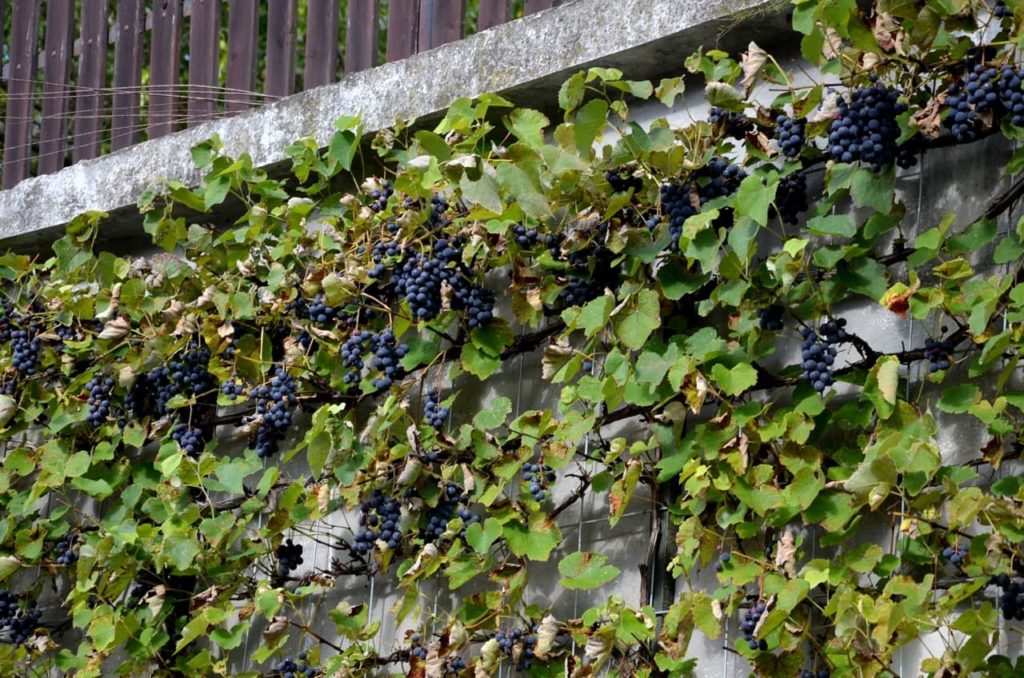
- BOTANICAL NAME: Vitis ‘Brant’
- HARDINESS RATING: H5
- FLOWERS: green
- FLOWERING SEASON(S): summer
Last but certainly not least, you should not overlook one of the most obvious edible vines – grapes.
There are grape varieties that can grow outside in the UK and you might potentially train the variety ‘Brant’ to grow up a sturdy fence in a garden.
Of course, if you’re growing grapes up a fence, you will need to make sure that it is in as mild, sheltered and sunny a spot as possible, with fertile and moist yet free-draining soil conditions.
There are many other climbing plants for fences, depending on what type of fence we are talking about and where it is located.
However, considering edible options could be a good place to begin to offer something extra in the garden.
